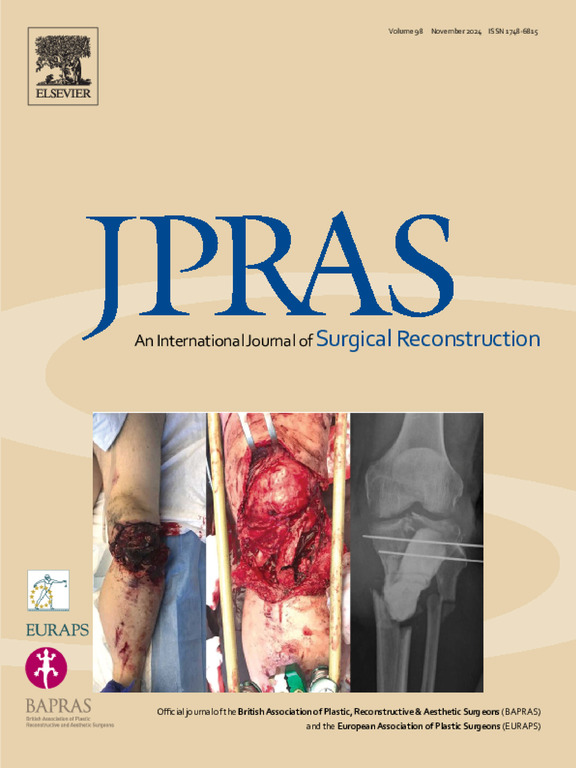The current state of tranexamic acid in mastectomy and breast reconstruction: A systematic review and meta-analysis
IF 2
3区 医学
Q2 SURGERY
Journal of Plastic Reconstructive and Aesthetic Surgery
Pub Date : 2025-03-12
DOI:10.1016/j.bjps.2025.03.022
引用次数: 0
Abstract
Background
The use of tranexamic acid (TXA) in breast surgery has been increasing; however, there have been no recent studies synthesizing the most current data. The purpose of this study was to perform a comprehensive targeted analysis on the impact of TXA in mastectomy with and without breast reconstruction.
Methods
A systematic review was conducted according to the preferred reporting items for systematic reviews and meta-analysis guidelines. Five databases were queried to identify studies using TXA in breast surgery. Dual-screening was employed to identify studies on mastectomy with and without breast reconstruction for full-text evaluation. Outcomes assessed included postoperative hematoma, seroma, surgical site infection (SSI), drain output, and drain duration. Data were pooled, and meta-analysis was performed. Odds ratios (OR) and mean differences (MD) were reported via the Mantel-Haenszel and Inverse-Variance methods, respectively.
Results
Thirteen studies totaling 2115 patients were included, with 44% of the patients (n=926) receiving TXA. Overall, 83% of the patients (n=772) received TXA intraoperatively and 82% of (n=632) received intravenous administration. Postoperative hematoma occurred in 2.4% of the patients (n=18) in the TXA group compared to 5.5% of the patients (n=53) in the control group, representing 60% decreased odds (OR 0.40; 95% CI [0.23–0.70], P = 0.001) of hematoma formation. TXA administration significantly reduced drain duration and 24-hour drain output by 1.2 days and 41.8 mL, respectively (MD: −1.2; P = 0.03; MD: −41.8; P = 0.002). TXA administration did not significantly impact the rates of seroma formation or SSI.
Conclusion
TXA administration was found to significantly reduce postoperative hematoma formation, drain duration, and 24-hour drain output, without impacting seroma or SSI rates.
求助全文
约1分钟内获得全文
求助全文
来源期刊
CiteScore
3.10
自引率
11.10%
发文量
578
审稿时长
3.5 months
期刊介绍:
JPRAS An International Journal of Surgical Reconstruction is one of the world''s leading international journals, covering all the reconstructive and aesthetic aspects of plastic surgery.
The journal presents the latest surgical procedures with audit and outcome studies of new and established techniques in plastic surgery including: cleft lip and palate and other heads and neck surgery, hand surgery, lower limb trauma, burns, skin cancer, breast surgery and aesthetic surgery.

 求助内容:
求助内容: 应助结果提醒方式:
应助结果提醒方式:


